#laich argyll
Explore tagged Tumblr posts
Text










Scotland Bressay Shetland Isles / Castle Mars Wark 1569 Castle Stalker Loch Laich Argyll Bute / Deans Village Dunrobin Castle / Duntrune Castle 4 Photos of Edinburgh
#scotland#edinburgh#bressay#shetland isles#mars wark#1569#stalker loch#laich argyll#deans village#dunrobin castle#duntrune castle#the invincible army
21 notes
·
View notes
Text
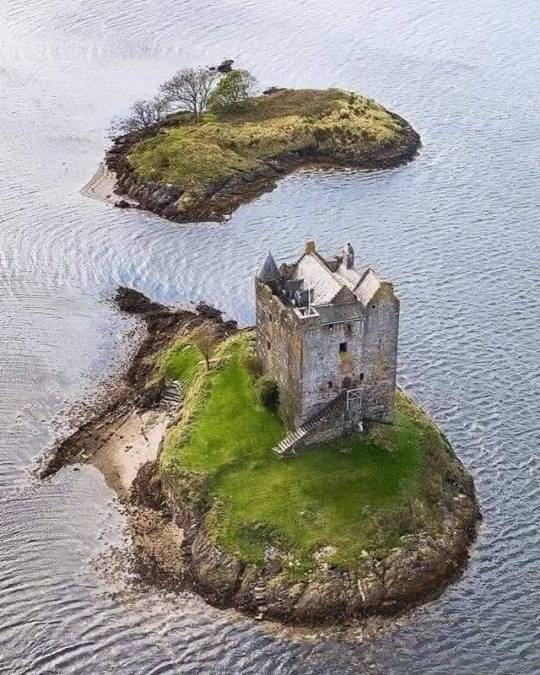
Castle Stalker - SCOTLAND
#castle#stalker#castillo#argyll#loch laich#scotland#escocia#united kingdom#reino unido#europe#europa
218 notes
·
View notes
Text

Castle Stalker (Scottish Gaelic: Caisteal an Stalcaire) is a four-storey tower house or keep picturesquely set on a tidal islet on Loch Laich, an inlet off Loch Linnhe. It is about 1 1⁄2 miles (2.5 kilometres) north-east of Port Appin, Argyll, Scotland, and is visible from the A828 road about midway between Oban and Glen Coe. The islet is accessible (with difficulty) from the shore at low tide. The name "Stalker" comes from the Gaelic Stalcaire, meaning "hunter" or "falconer.
143 notes
·
View notes
Text


Castle Stalker on Loch Laich, Argyll, Scotland © WLDavies/Getty Images
Today on Bing- February 26, 2025 Castle Stalker, Argyll, Scotland
Scottish strategy at its finest | EN-CA, EN-CN, EN-GB, EN-US
0 notes
Photo

Castle Stalker on Loch Laich, Argyll, Scotland (© WLDavies/Getty Images)
0 notes
Text
Castle Stalker a four-storey tower house or keep. It is set on a tidal islet on Loch Laich, an inlet off Loch Linnhe. It is about 2.5 kilometres north-east of Port Appin, Argyll, Scotland, UK.
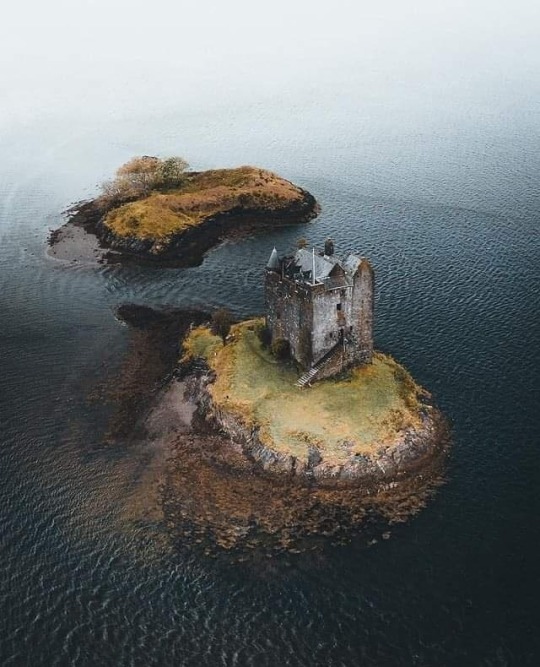
726 notes
·
View notes
Photo
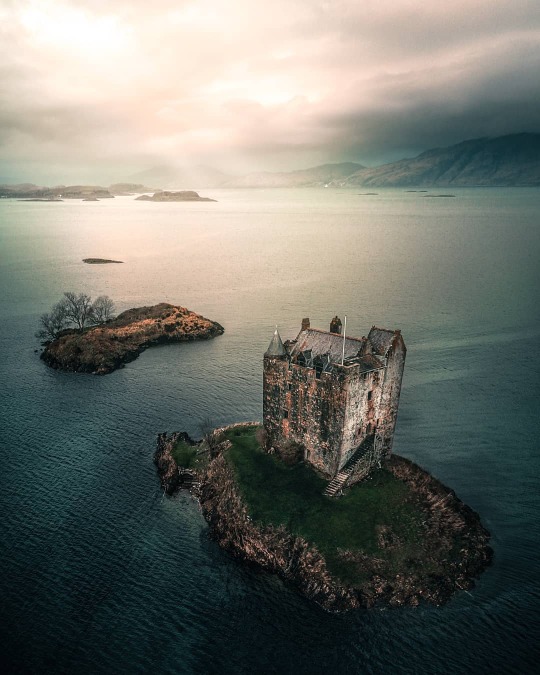
Stalker Castle, Loch Laich, Argyll, Scotland,
Harry T. Baker Photography
#art#design#fortress#castle#stalker castle#appin#scotland#loch laich#loch linnhe#argyll#retreat#hideway#luxury houses#luxury homes#style#luxury lifestyle#history
1K notes
·
View notes
Photo

275 notes
·
View notes
Photo

Castle Stalker.
112 notes
·
View notes
Photo


Castle Stalker (Scottish Gaelic: Caisteal an Stalcaire) is a four-storey tower house or keep in the Scottish county Argyll. It is set on a tidal islet on Loch Laich, an inlet off Loch Linnhe. It is about 1+1⁄2 miles (2.5 kilometres) north-east of Port Appin and is visible from the A828 road about midway between Oban and Glen Coe. The islet is accessible with difficulty from the shore at low tide. The name "Stalker" comes from the Gaelic Stalcaire, meaning "hunter" or "falconer". The island castle is one of the best preserved medieval tower houses to survive in western Scotland and is a Category A listed building. It stands in the Lynn of Lorn National Scenic Area.
History
The original castle was a small fort built around 1320 by Clan MacDougall, who were then Lords of Lorn.[4] Around 1388 the Stewarts took over the Lordship of Lorn, and it is believed that they built the castle in its present form around the 1440s. The Stewarts' relative King James IV of Scotland visited the castle, and a drunken bet around 1620 resulted in the castle passing to Clan Campbell.[4] After the castle changed hands between these clans a couple of times, the Campbells finally abandoned it about 1840 when it lost its roof. In 1908 the castle was bought by Charles Stewart of Achara, who carried out basic conservation work. In 1965 Lt. Col. D. R. Stewart Allward acquired the castle and over about ten years fully restored it. Castle Stalker remains in private ownership and is open to the public at selected times during the summer.
For the 2011 census the island on which the castle stands was classified by the National Records of Scotland as an inhabited island that "had no usual residents at the time of either the 2001 or 2011 censuses.

Castle Stalker, Scotland (by WlasnaDroga)
3K notes
·
View notes
Photo








THE RESTORED CASTLE STALKER -- IT IS SET ON A TIDAL ISLET ON LOCH LAICH, AN INLET OFF LOCH LINNHE WHICH IS 1.5 MILES NORTH-EAST OF PORT APPIN, ARGYLE.
6 notes
·
View notes
Text

Castle Stalker, set on a tidal islet on Loch Laich, north-east of Port Appin, Argyll, Scotland.
26 notes
·
View notes
Photo
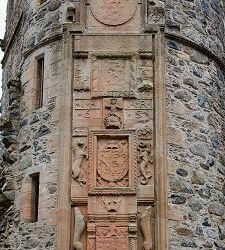
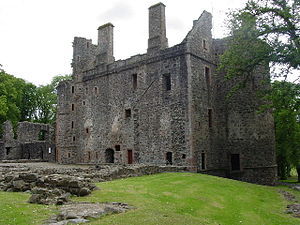
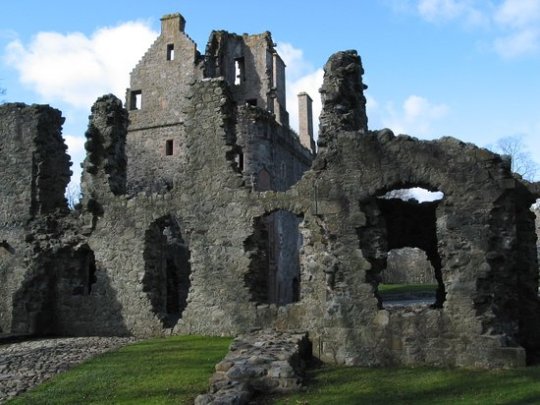
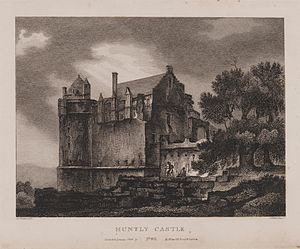

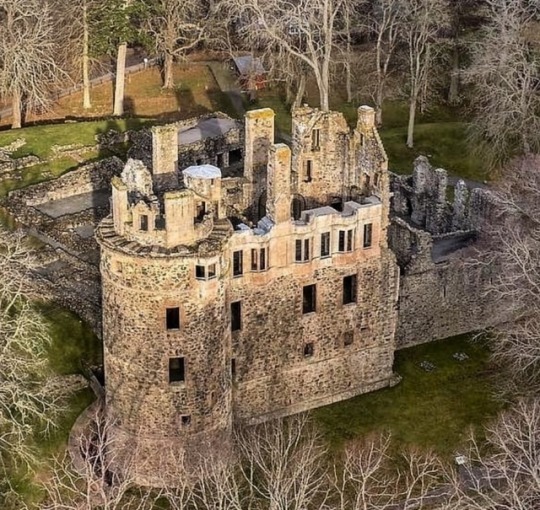
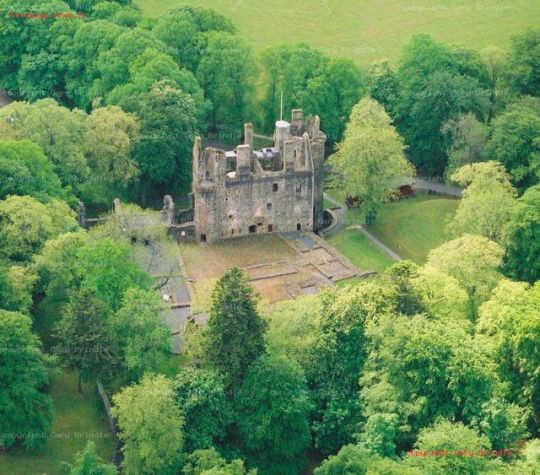

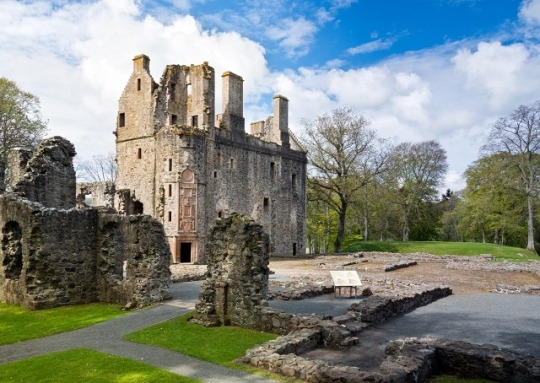
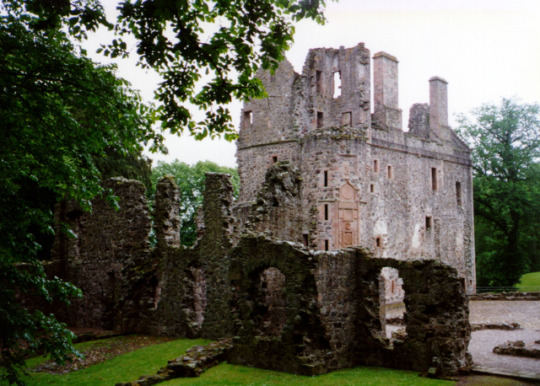
Man's Impact on the Environment Huntly Castle Aberdeenshire, Scotland
Huntly Castle is a ruined castle in Huntly in Aberdeenshire, Scotland. It was the ancestral home of the chief of Clan Gordon, Earl of Huntly.
Architecturally the L plan castle consists of a well-preserved five-storey tower with an adjoining great hall and supporting buildings. Areas of the original ornate facade and interior stonework remain. A mound in the grounds of the castle is all that remains of an earlier 12th century motte. Originally named Strathbogie, the castle was granted to Sir Adam Gordon of Huntly in the 14th century. King Robert the Bruce was a guest of the castle in 1307 prior to his defeat of the Earl of Buchan.
It was fired in 1452 by a force under the command of Archibald Douglas, Earl of Moray. In 1449 the king was at war with the powerful Black Douglases, the Gordons stood on the king's side and, with their men involved in the south of the country, the Earl of Moray, a brother of the Earl of Douglas, took the opportunity to sack the Gordon lands, setting Huntly Castle ablaze. The Gordons returned and quickly destroyed their enemies.
Although the castle was burned to the ground, a grander castle was built in its place. In 1496, the pretender to the English throne, Perkin Warbeck, was married to Lady Catherine Gordon the daughter of George Gordon, 2nd Earl of Huntly, witnessed by King James IV of Scotland at Edinburgh. James IV came to Huntly in October 1501 and gave gifts of money to the stonemasons working on the castle. In October 1503, James IV came again and played in a shooting contest at a "prop", and he came back again in the following October. These visits were part of his annual pilgrimage to the shrine of Saint Duthac at Tain.
William MacKintosh was executed on 23 August 1550 at Castle Strathbogie.
Wings were added to the castle in the 16th and 17th centuries. The English diplomat Thomas Randolph stayed two nights in September 1562, and wrote that the castle was "fayer, beste furnishede of anye howse that I have seen in thys countrie." An eyewitness description of the death of George Gordon, 5th Earl of Huntly in 1576, compiled by Richard Bannatyne gives some details of how the castle was used. The Earl suffered a stroke, or a collapse caused by food-poisoning, while playing football outside the Castle on the Green. He was taken through the outer-gate to his bedchamber in the round tower of the palace block, which was then called the "New Warke of Strathbogie." The Earl's bedchamber was adjacent to his "Grit Chalmer", the Great Chamber. After the Earl died, his body was laid out in the "Chamber of Dais", another name for the Great Chamber, and his valuables were secured in the bedchamber. After the Earl's steward left the Castle a number of alleged supernatural events occurred beginning with the sudden collapse of one of the servants in the "Laich Chalmer", Low Chamber. This "Laich Chalmer" was in another part of the castle, under a stair opposite the "Auld Hall." On the following day a servant went up to the Gallery at the top of the "New Warke" where spices (which were precious) were stored. This servant and two companions also collapsed and when revived complained of feeling cold. After the Earl's body was embalmed and taken to the chapel, his brother sat on a bench in the Hall by the Great Chamber door, and heard unexplained sounds from the chamber. It was said that "there is not a live thing bigger than a mouse may enter in that chamber with the door locked."
In 1640 the Castle was occupied by the Scottish Covenantor army under Major-General Robert Monro (d. 1680). James Gordon Parson of Rothiemay tells us how the house "was preserved from being rifled or defaced, except some emblems and imagery, which looked somewhat popish and superstitious lycke; and therefore, by the industry of one captain James Wallace (one of Munro's foote captaines) were hewd and brocke doune off the frontispiece of the house; but all the rest of the frontispiece containing Huntly's scutcheon, etc, was left untouched, as it stands to this daye."
Captured in October 1644, the castle was briefly held by James Graham, 1st Marquess of Montrose against the Duke of Argyll. In 1647 it was gallantly defended against General David Leslie by Lord Charles Gordon, but its 'Irish' garrison was starved into surrender. Savage treatment was meted out, for the men were hanged and their officers beheaded. In December of the same year Huntly himself was captured and on his way to execution at Edinburgh was detained, by a refinement of cruelty, in his own mansion. His escort were shot against its walls. In 1650 Charles II visited briefly on his way to the Battle of Worcester, defeat and exile. The Civil War brought an end to the Gordon of Huntly family's long occupation of the castle.
In 1689, during the first Jacobite rising, the castle was briefly the headquarters for Viscount Dundee and his Jacobite army, at the end of April, just after the start of the revolt. However, by the early eighteenth century the castle was already in decay and providing material for predatory house builders in the village. In 1746, during a later Jacobite rising, it was occupied by British government troops. Thereafter, it became a common quarry until a groundswell of antiquarian sentiment in the 19th century came to the rescue of the noble pile.
Huntly Castle remained under the ownership of the Clan Gordon until 1923. Today, the remains of the castle are cared for by Historic Environment Scotland as a scheduled monument.
Pure Strength I, a major international strongman competition, was held on the grounds of Huntly Castle in 1987. The winner of the contest was Jón Páll Sigmarsson of Iceland.
7 notes
·
View notes
Video
Castle Stalker by Dennis Wilkinson Via Flickr:
28 notes
·
View notes
Video
Castle Stalker again da David Munro Tramite Flickr: Loch Linnhe near Port Appin in Argyll and Bute. Castle Stalker is in the distance in the middle of the shot. It is built on a small island on Loch Laich, an inlet off Loch Linnhe . The original castle was a small fort, built around 1320 by Clan McDougall. Around 1388 the Stewarts took over the Lordship of Lorn, and it is believed that they built the castle in its present form around the 1440s. Castle Stalker is now in private ownership and is open to the public at selected times during the summer.
6 notes
·
View notes
Photo
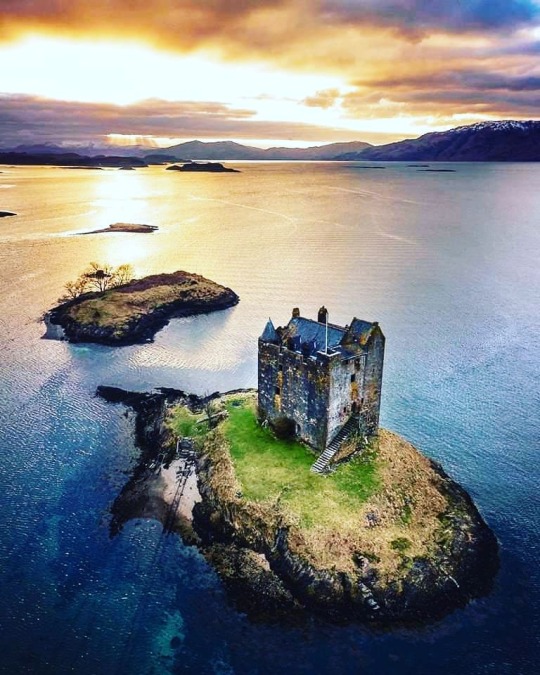
The iconic Castle Stalker, Scotland Castle Stalker is a four-storey tower house or keep picturesquely set on a tidal islet on Loch Laich, an inlet off Loch Linnhe. It is about 1.5 miles (2.4 km) north-east of Port Appin, Argyll, Scotland, and is visible from the A828 road about midway between Oban and Glen Coe. The islet is accessible (with difficulty) from the shore at low tide. The name "Stalker" comes from the Gaelic Stalcaire, meaning "hunter" or "falconer". The island castle is one of the best-preserved medieval tower-houses to survive in western Scotland and is a Category A listed building. The castle was brought to fame by the Monty Python team, appearing in their film Monty Python and the Holy Grail. Source British Bird #castle #castlestalker #kasteel https://www.instagram.com/p/CGfx0zJARSE/?igshid=9umtv7v08oeo
0 notes
